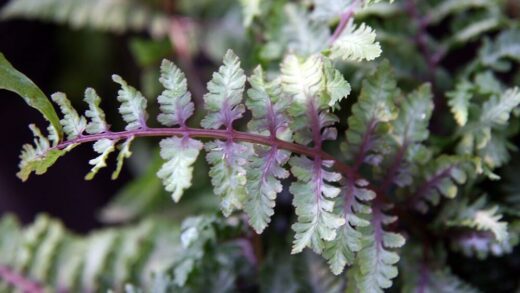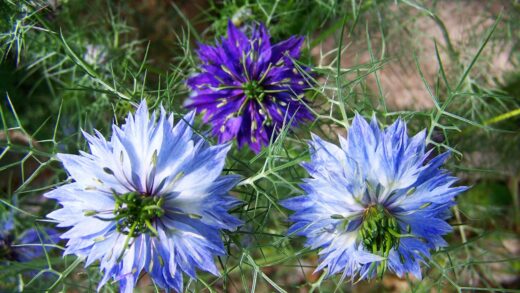Understanding the precise water requirements of dusty miller is fundamental to its successful cultivation, as improper irrigation is one of the most common pitfalls in its care. This plant, with its origins in the arid, sun-drenched landscapes of the Mediterranean, has evolved to be remarkably resilient in the face of drought. Consequently, the greatest danger it faces in a typical garden setting is not a lack of water, but an excess of it. Providing the right amount of moisture at the right time is a delicate balance that, once mastered, will ensure the plant maintains its stunning silvery foliage and robust health throughout the entire growing season.
The key to properly watering dusty miller lies in recognizing its life stage and the prevailing environmental conditions. Newly planted seedlings or recent transplants have not yet developed an extensive root system, making them more vulnerable to drying out. During this crucial establishment period, which typically lasts for a few weeks, the soil should be kept consistently moist to encourage strong root growth. This means checking the soil every couple of days and providing a thorough soaking whenever the top inch becomes dry. This initial care is an investment in the plant’s future drought tolerance.
Once the plant is well-established, as indicated by new growth and a vigorous appearance, its water needs decrease dramatically. A mature dusty miller with a deep and extensive root system can draw moisture from a larger volume of soil, making it highly efficient at surviving dry spells. In most climates, established plants will require supplemental watering only during prolonged periods of drought or extreme heat when rainfall is scarce. The natural resilience of the plant means that gardeners should always err on the side of underwatering rather than overwatering.
The physical characteristics of the plant itself offer clues to its water-wise nature. The leaves are covered in fine, silvery hairs, known as trichomes, which are a brilliant adaptation to its native habitat. These hairs serve multiple purposes: they reflect intense sunlight, reduce the impact of wind, and, most importantly, trap moisture at the leaf’s surface, significantly slowing the rate of transpiration. This natural mechanism allows the plant to conserve water with remarkable efficiency, a trait that should guide every irrigation decision a gardener makes.
Therefore, the guiding principle for irrigating dusty miller is to allow the soil to dry out thoroughly between waterings. This practice mimics the natural precipitation patterns of the Mediterranean region and is essential for preventing the development of root rot and other fungal diseases. Before reaching for the hose, always check the soil moisture first. A simple touch test, inserting a finger a few inches into the soil, is often the most reliable method. If the soil feels damp, it is best to wait a few more days before watering again.
More articles on this topic
Understanding drought tolerance
Dusty miller’s renowned drought tolerance is not an accident but a product of evolutionary adaptation to a challenging environment. Its native Mediterranean habitat is characterized by long, hot summers with infrequent rainfall, forcing plants to develop sophisticated strategies for water conservation and survival. Understanding these adaptations provides valuable insight into how to care for the plant in a garden setting. The plant’s ability to thrive in dry conditions is a significant advantage, making it an excellent choice for water-wise landscapes and regions with watering restrictions.
The most visible adaptation is the dense covering of fine, silvery-white hairs on the leaves and stems. These trichomes create a physical barrier that serves several functions. They reflect a significant portion of incoming solar radiation, which helps to keep the leaf surface cool and reduces water loss through evaporation. Furthermore, this felt-like layer traps a thin blanket of still air close to the leaf, which increases the humidity right at the surface and slows down the rate of transpiration, the process by which plants release water vapor into the atmosphere.
Below the ground, dusty miller develops a deep and fibrous root system once it becomes established. This allows the plant to explore a larger volume of soil for moisture, reaching water sources that are unavailable to more shallow-rooted plants. During periods of drought, the plant can access water from deeper soil layers, allowing it to survive when the surface is completely dry. This is why deep, infrequent watering is so beneficial; it encourages the roots to grow downwards in search of a stable water supply, reinforcing the plant’s natural drought resistance.
This inherent tolerance to dry conditions means that the plant is exceptionally well-suited for xeriscaping and low-maintenance gardening. It can be planted in rock gardens, on dry slopes, or in other challenging areas where other plants might struggle to survive. However, it is important to remember that “drought-tolerant” does not mean “no water.” All plants require some moisture to live, especially during their establishment phase. The term simply indicates that the plant can withstand periods of dryness much better than average, a quality that should inform a more restrained and thoughtful approach to irrigation.
More articles on this topic
Irrigation techniques
The method by which you deliver water to your dusty miller plants can have a significant impact on their health. The best practice is to apply water directly to the soil at the base of the plant, avoiding the foliage as much as possible. Wetting the dense, felt-like leaves can trap moisture, creating an ideal environment for fungal diseases such as powdery mildew and botrytis to develop. Using a soaker hose or a drip irrigation system is an excellent way to deliver water efficiently to the root zone without wetting the leaves. If you must water by hand, use a watering can with a long spout to target the soil directly.
When you do water, it is far more effective to provide a deep, thorough soaking rather than a light, frequent sprinkling. A deep watering ensures that the moisture penetrates several inches into the soil profile, which encourages the plant’s roots to grow deeper and stronger. This, in turn, enhances the plant’s overall drought tolerance. A light sprinkling only wets the top layer of soil, which encourages shallow root growth, making the plant more dependent on frequent irrigation and more susceptible to stress during dry periods.
The timing of your watering is also an important consideration. Watering in the early morning is generally the most efficient and beneficial time of day. Morning irrigation allows the plant to absorb the moisture it needs to face the heat of the day. It also ensures that any moisture that does splash onto the leaves has ample time to evaporate in the morning sun, reducing the risk of fungal diseases. Watering in the evening is less ideal, as the foliage may remain damp overnight, creating a more favorable environment for pathogens to thrive.
For dusty miller grown in containers, the watering strategy needs to be slightly different. Soil in pots dries out much more quickly than garden soil, especially on hot, windy days. Therefore, container-grown plants will require more frequent watering than their in-ground counterparts. However, the same core principles apply: use a well-draining potting mix, ensure the container has adequate drainage holes, and always check the soil moisture before watering. Allow the top inch or two of the potting mix to dry out completely before providing a thorough soaking until water runs freely from the drainage holes.
Recognizing signs of water stress
Being able to identify the signs of both overwatering and underwatering is a crucial skill for any gardener. For dusty miller, the symptoms of overwatering are often more severe and immediate than those of underwatering. The most common sign of excessive moisture is yellowing of the lower leaves. As the condition progresses, the stems may become soft and mushy at the base, and the entire plant may begin to wilt, a condition that can be confusing as wilting is also a sign of dryness. However, if the soil is damp and the plant is wilting, root rot is the likely culprit.
Root rot is a fungal disease that thrives in anaerobic, waterlogged soil conditions. The roots begin to decay, losing their ability to absorb water and nutrients, which ultimately leads to the collapse of the entire plant. Once root rot has set in, it is very difficult to reverse. Prevention is by far the best strategy, which underscores the importance of providing well-draining soil and allowing the soil to dry out between waterings. If you suspect overwatering, immediately cease all irrigation and allow the soil to dry completely. In severe cases, you may need to carefully dig up the plant and inspect the roots, trimming away any that are brown and mushy before replanting in fresh, dry soil.
Conversely, while dusty miller is very drought-tolerant, it is not immune to the effects of severe, prolonged drought. The first sign of underwatering is usually a slight wilting or drooping of the leaves during the hottest part of the day. Initially, the plant may recover on its own overnight as temperatures cool. However, if the dry conditions persist, the wilting will become more pronounced, and the edges of the leaves may begin to turn brown and crispy. The entire plant may take on a stunted or shrunken appearance.
If you observe these signs of underwatering, it is a clear indication that the plant needs a deep and immediate soaking. Apply water slowly and thoroughly to the base of the plant, allowing it to penetrate deep into the root zone. The plant should begin to recover and perk up within a few hours. To prevent this from happening in the future, monitor the plant during periods of extreme heat and be prepared to provide supplemental water if you do not receive any rainfall for several weeks. Regularly checking the soil moisture remains the most reliable way to gauge the plant’s needs.
Seasonal water adjustments
The water requirements of dusty miller are not static; they fluctuate significantly with the changing seasons and the plant’s growth cycle. It is essential for gardeners to adapt their irrigation practices accordingly to provide optimal care throughout the year. Understanding these seasonal shifts is key to maintaining a healthy and vibrant plant from spring through autumn. A rigid, one-size-fits-all watering schedule is rarely effective and should be avoided in favor of a more responsive and observant approach.
In the spring, as new growth begins, the plant’s water needs will gradually increase. The combination of rising temperatures and active growth means that the plant will be transpiring more and utilizing more water for its metabolic processes. During this period, especially for young plants, it is important to ensure the soil has consistent moisture to support this burst of growth. However, spring can also be a time of frequent rainfall, so it is crucial to factor in natural precipitation and avoid overwatering. Always check the soil before adding more water.
Summer is the period of peak growth but also the time of highest potential for heat and drought stress. During hot, dry spells, you will need to monitor your plants more closely. Even established, drought-tolerant dusty miller may require a deep watering every couple of weeks if there is no significant rainfall. The goal is not to keep the soil constantly moist but to provide enough water to prevent the plant from showing signs of severe stress. Container-grown plants will be particularly thirsty in the summer and may need watering every few days.
As autumn approaches, temperatures begin to cool and the plant’s growth rate slows down. Consequently, its water requirements will naturally decrease. You should begin to taper off your supplemental watering schedule in the fall. The cooler air and reduced sun intensity mean that the soil will retain moisture for longer periods. Continuing to water at summer levels can easily lead to waterlogged soil and increase the risk of root rot as the plant heads into its dormant period. In most regions, normal autumn rainfall is more than sufficient to meet the plant’s needs at this time of year.


















